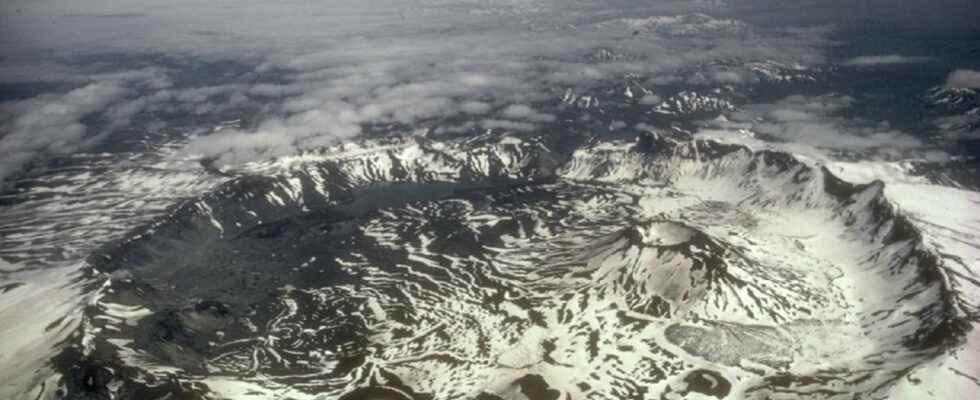Some large volcanic eruptions are known to have strongly impacted human populations throughout history. This is the case with the eruption of volcano Thera, located in Greece on the current island of Santorini. Known as the Minoan eruption, the explosion of Thera was certainly one of the most powerful volcanic events of the last 12,000 years. In particular, it would have been at the origin of the fall of the Minoan civilization.
However, despite the large volcanic deposits found everywhere around the Mediterranean, the exact dating of this eruption remains complicated. It is believed to have taken place between -1680 and -1500 years before our era. Some clues, including anomalies within the growth rings of trees, indicate in particular that an event would have severely affected the climate of the years -1628/1627. Several studies suggest that this was the volcanic winter created by the eruption of Thera, thus more precisely defining the date of the explosion.
Dating volcanic eruptions using glacial records
However, these results are far from unanimous. Other indicators indeed suggest that the climate would have been disturbed by one or more volcanic events on seven other occasions, between -1654 and -1524. Moreover, the Thera volcano would not have been the only active volcano during this period. Other candidates exist, and there are many of them.
To untangle all the events that occurred during this period and attribute each effect to a specific cause, a team of scientists led by Charlotte Pearson focused on the analysis of ice cream carrots recovered from the ice caps of Greenland andAntarctic. The continued accumulation, over thousands of years, of snow and ice at ice caps indeed plays a climate archive role and allows, in particular, to find the traces of the great eruptions and to date them. The eruptions indeed project into theatmosphere large amounts of ash and gas volcanic events which will temporarily modify the composition of the atmosphere. These markers are thus trapped in the ice at the poles.
The researchers were thus interested in the presence of volcanic sulphate deposits in these ice samples. Sulphates derive fromsulfuric acida compound that forms in the atmosphere by reaction with sulfur, a characteristic element of volcanic discharges. The presence of sulphate has been correlated with the presence of volcanic particles solid (tephras). The joint analysis of these data makes it possible in particular to go back to the source of the volcanic event and to identify a specific volcano for each eruption.
A volcanic winter caused by another volcano, located in Alaska
The results, published in the journal PNAS Nexus show that the year -1628 was indeed marked by a major volcanic eruption, which would have strongly impacted the climate at that time. But, for researchers, the responsible is not Thera, but another volcano, located on the other side of the globe, in Alaska: Aniakchak II. This very important eruption would have been preceded in -1654 by another major eruption, emitted by a volcano for the moment unknown. These two events would have been by far the most catastrophic of thenorthern hemisphere over the last 4,000 years, affecting the climate for one or two years globally.
The eruption of Thera is still not dated with precision. Three dates are however advanced: -1611, -1561/1558/1555 and -1538 before our era. All these dates indeed correspond to the occurrence of a volcanic eruption, of much less magnitude, however, than that of Aniakchak II. In the end, the scientists estimate that the eruption of Thera would not have had a significant impact on the climate. Its impact would at least have been much lower than that of the eruption of Tambora, which occurred much more recently, in 1815.
Special offer: for Father’s Day, offer the best of Science!
Your father is a great science enthusiast and unusual discoveries? And if you offer him a superb scientific exploration in paper format? Benefit from -20% on the Mag Futura (special offer: €15 instead of 19 €): 220 pages to explore 4 scientific issues that will shape our future!
Mag Futura is:
- 4 major scientific questions for 2022, from the Earth to the Moon
- 220 pages, 60 experts: no fake news, just science
- Home delivery with electronic gift card
- An independent scientific media
Interested in what you just read?
